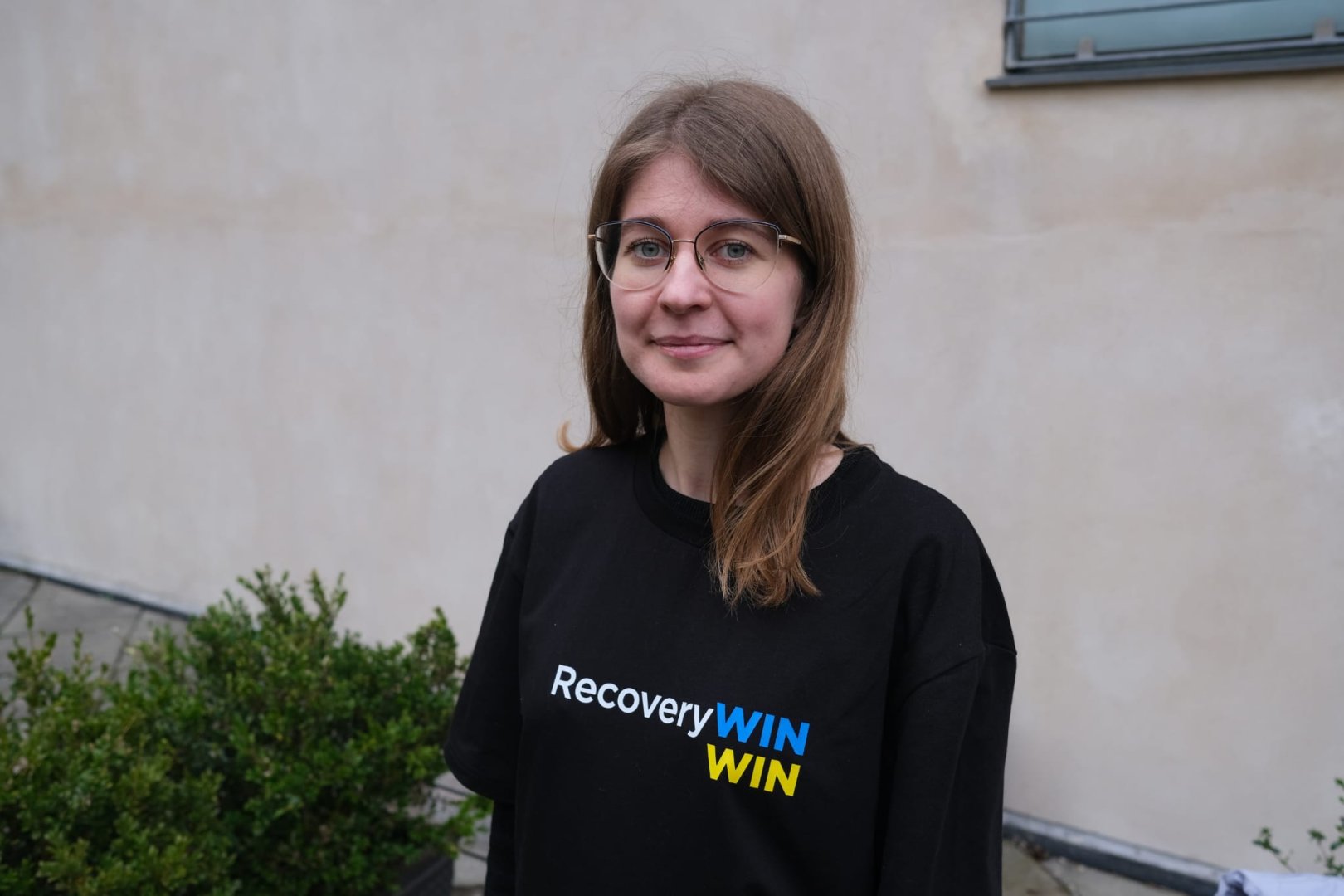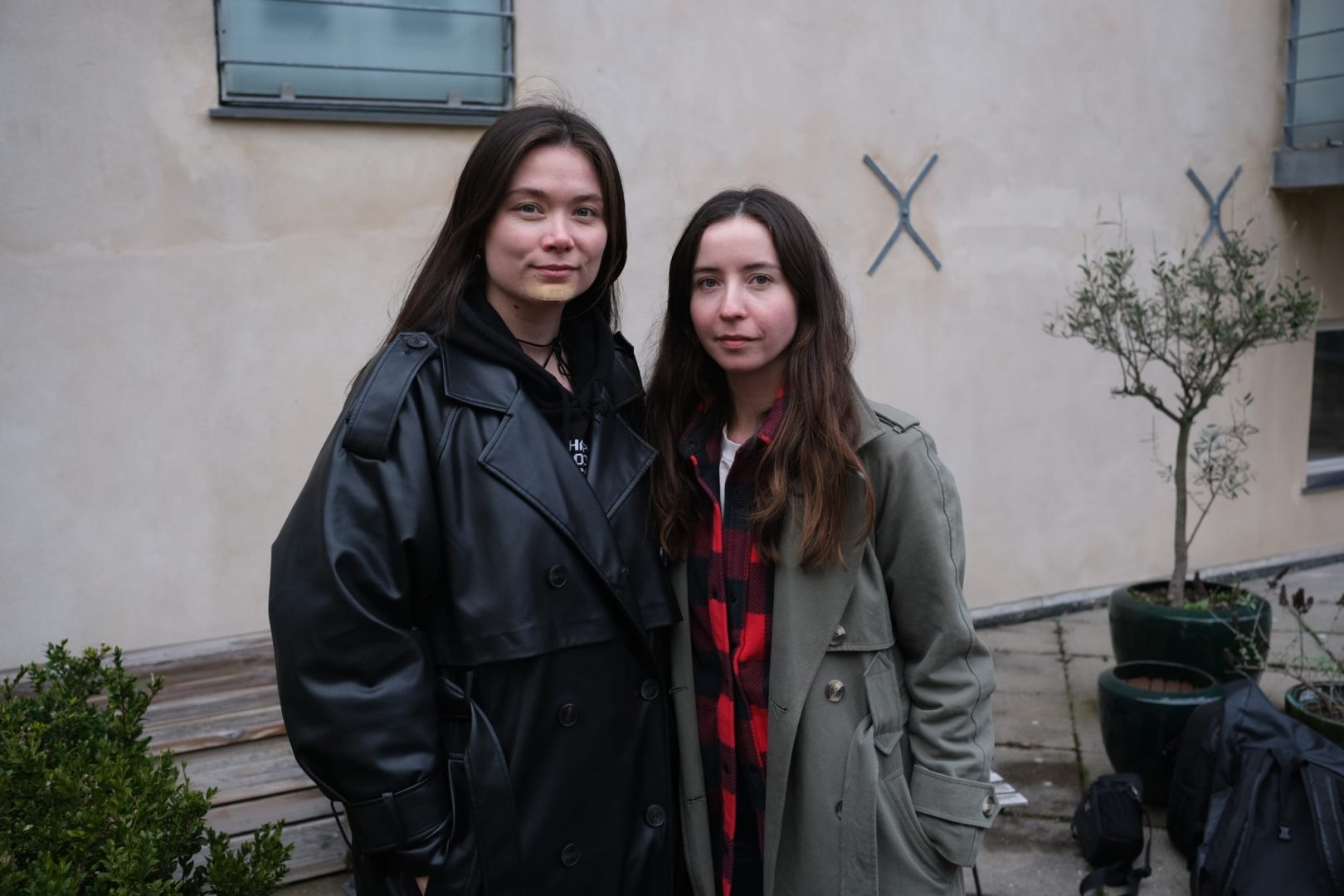
KYIV REGION, UKRAINE - 13 DECEMBER: Iryna Borzak the village elder of Rudnytske, speaks with journalists at a damaged school during a press tour in the village of Rudnytske in Kyiv region, Ukraine, on 13 December 2022. On 28 March, the village of Rudnytske in the Kyiv region was liberated from Russian troops, dozens of houses were destroyed or seriously damaged. Most of the apartments were left without roofs, ceilings and windows. In the summer, several charitable foundations combined their efforts to help 8 local residents, whose homes were particularly affected, enter the winter in warm and intact houses. The project costing UAH 900,000 was called the 'Phoenix of Rudnytske', because some buildings were really rebuilt from the ashes, according to the organizers of the project. (Photo by Vladimir Shtanko/Anadolu Agency via Getty Images)
Ukraine war
Covering recovery in Ukraine – a win-win for journalism?
Some media outlets in Ukraine are looking to carve out space for stories focused on solutions and recovery. This approach is not done to sideline traditional news and frontline reporting, but to encourage agency and hope.
Reporters in Ukraine go to places of tragedy. Buildings and homes are destroyed, people killed and injured. But even in such circumstances it is still possible to focus on something constructive: those who help, those who rebuild. For Ukrainian online media outlets Rubryka and ShoTam, choosing a solutions-oriented angle to their journalism is instrumental.
“I see this as journalism’s contribution to bringing hope and instiling a sense of engagement in a society where people are fatigued by news about the war – even inside Ukraine,” says Anastasia Rudenko, editor-in-chief of Rubryka.
Rubryka is a Ukrainian online media outlet specialising in solutions journalism and covering news and sociopolitical developments from Ukraine in Ukrainian, Russian and English. It was founded in 2018 by Anastasia Rudenko, the only solutions journalism trainer in Ukraine, accredited by the Solutions Journalism Network.
Their headquarter is in Kyiv, but Rubryka has a decentralised structure and editorial presence around the country. This structure also serves as a contingency plan for when infrastructure is down. A recent attack on Ukraine’s energy infrastructure impacted electricity supplies, which affected the Kyiv office. The office in Dnipro stepped in and ensured the website could still be updated.
With two million monthly visitors to their website, Rubryka are enjoying growth. “We launched an English version of some of our content right before the full-scale invasion in 2022. After the invasion, engagement with our channels skyrocketed,” Anastasia Rudenko recalls.

But what does solutions-oriented reporting look like? Anastasia Rudenko shares an example of a village in Eastern Ukraine that was liberated.
“People wanted to return. But houses were badly destroyed, and people wanted to rebuild – but had very little means to work with. A group of volunteers called ‘Brave to Rebuild’ found out and decided to start working. Instead of describing the destroyed houses our journalism focused on the volunteers going to help the villagers and how the group found volunteers to do this work,” Anastasia Rudenko explains.
She insists that such an approach to journalism differs from advertisement: “We still circle around the traditional style of journalism, which is reporting on a problem, a challenge. We just emphasise different elements. We still need to tell the story in a compelling way – using reportage and emotions, but Rubryka will also include instructions into our content,” she explains.
“We have a rule in the team that we must write in such a way that others are able to replicate the initiative elsewhere in another oblast [region, ed.] tomorrow. In the case of the liberated village, we focused on the volunteers – but not in a regular portrait story. Our focus was more on how to do the work,” she explains. However, Rubyka did not shy away from reporting on obstacles such as funding shortcomings, burn-out amongst the volunteers and being dependent on donors.
Joining hands to go beyond a local focus
At the moment, Rubryka produce many similar stories, happening at a local level. But Anastasia’s ambition is to focus on larger problems, on national level challenges such as how to get people to return to Ukraine and how to ensure a flexible education system that can support internally displaced.
“I dream of mainstreaming the topic of recovery so that people in Kyiv find it relevant to know how and why people in Mykolaiv go about rebuilding destroyed kindergartens. Rural communities face a lot of challenges in Ukraine,” Anastasia believes.
She thinks that many Ukrainians are exhausted and disappointed. Every family is touched by the situation and asks if their sacrifice is worth it.
That is also why she initiated Recovery Window, a coalition of media outlets and civil society organisations working with solutions-oriented initiatives in Ukraine. See box below for details.
Recovery Win
Recovery Window – also called Recovery Win – is a coalition of media outlets and civil society organisations that have joined forces to increase their individual capacities in contributing to solutions-oriented journalism.
Formed in March 2023 by five media outlets and two thinktanks, the Recovery-Win coalition counts 80 members a year later. Sixty of them are media outlets.
The coalition focuses on:
– Funding for solution-oriented content.
– Amplifying voices from a local level – distribution and story aggregation.
– Capacity building in investigative reporting.
– Creating a database of experts.
IMS have supported the formation of the coalition. Recovery Win has also received support from FCO and New Democracy Fund.
“I realised that media colleagues in other regions struggled with much the same challenges as I did. Audiences have changed after the full-scale invasion because of displacement and economic troubles and now look for different and uplifting news. We did not know how to find ourselves and our new roles as media covering a recovery agenda – I basically sensed a need for a new vision.”
The Recovery Window coalition want to address a fundamental challenge of being scattered and fragmented and to tackle the lack of resources and improve capacity.
Road to recovery
ShoTam also works in the realm of constructive journalism. The media outlet started out as a humble Facebook initiative back in 2017 and now have 1 million subscribers all over Ukraine. The name translates to “What’s Up” and are known for optimistic online videos with captions.
Content Director Krystyna Chernenko describes the media outlet as a “positive solutions media” targeting young audiences. She and her colleague Olena Lavruk, a grant manager, explain that ShoTam’s content does not include politics and “regular news”. Instead, it centres on people-led stories, such as an internally displaced woman business owner who has started up again after relocating.
“An entrepreneurial woman may inspire others and while frontline reports and stories about the bad economy remain important, we also need to hear positive and uplifting news about individuals doing well and a local library being rebuilt because people joined forces,” Krystynya says.

“After we published the library story, many asked in the comments how they could help. That is ShoTam’s thing; to make a small, personal difference and inspire. Even in horrible times, good stuff still happens,” Olena Lavruk adds.
The library story touches on a key theme for both Rubryka and ShoTam: recovery.
“Ukrainians are fighters but want to live a normal life. We want to rebuild. Russia ruined our normal life, but they cannot ruin our dreams. That is why I want to pivot towards reporting on what you can do to recover,” Anastasia Rudenko, Rubryka’s editor-in-chief, says. She pauses, then adds: “And what other way forward we have?”




